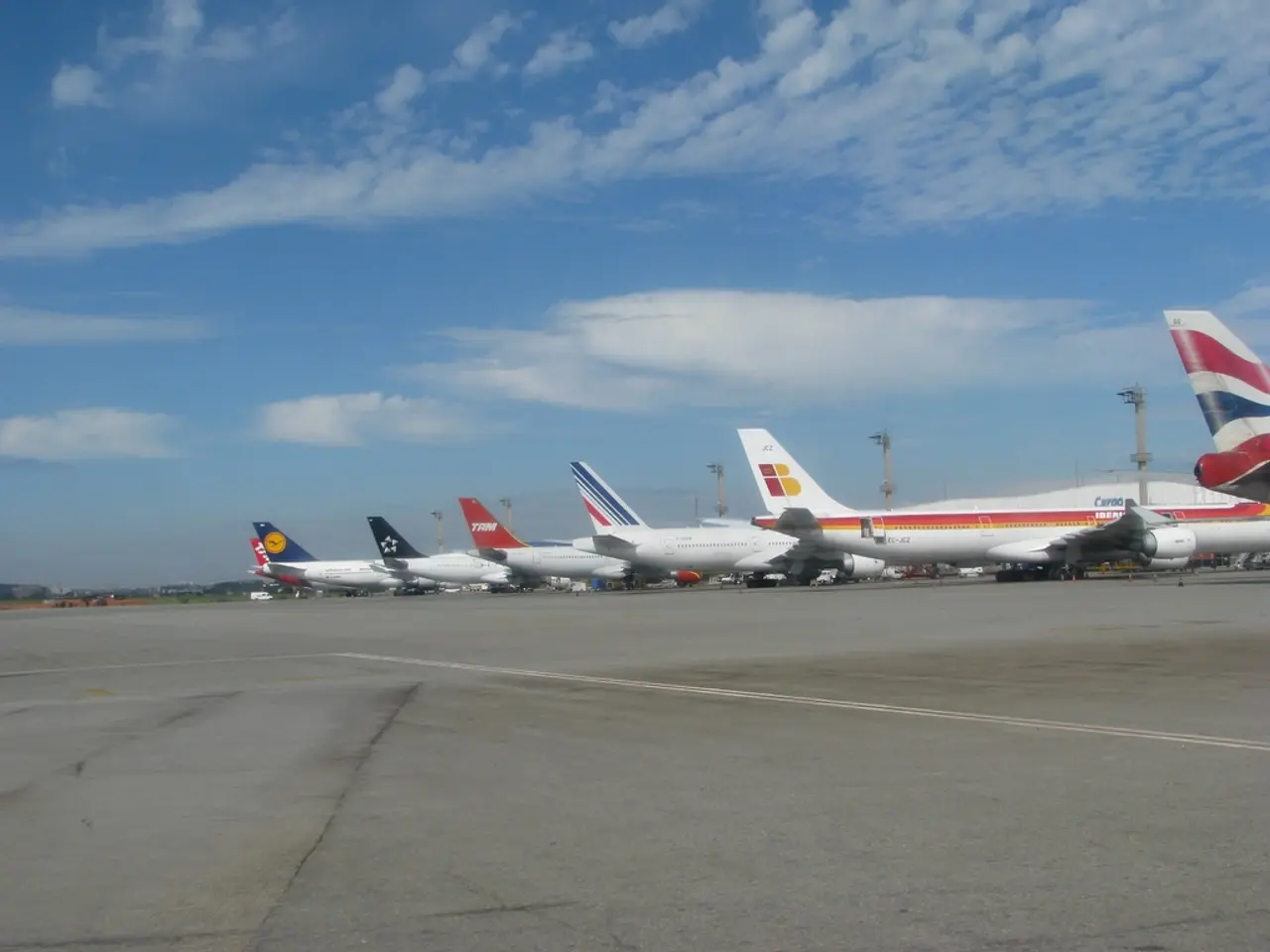Routes that frequently experience extreme turbulence during flights for aircraft.
Global Warming to Increase Turbulence on Busiest Air Routes
A recent fatal accident on a Singapore Airlines flight has highlighted the dangers of turbulence, a problem that is expected to worsen in the near future due to global warming.
The most turbulent air routes are primarily those crossing mountainous regions and busy transoceanic corridors like the North Atlantic. Key routes include:
- South America's Mendoza (Argentina) to Santiago (Chile), over the Andes, the world's longest mountain range, is the single most turbulent route globally due to mountain wave turbulence.
- Routes crossing major mountain ranges such as the Rockies (western US), the Andes, the Himalayas, the Alps, and New Zealand’s Cook Strait, where airflow over tall peaks creates strong oscillating mountain waves, also experience high levels of turbulence.
- The North Atlantic flight routes, one of the world’s busiest air corridors, have seen a significant rise in severe clear-air turbulence (CAT), linked closely to climate change. Severe CAT over the North Atlantic increased about 55% between 1979 and 2020 and is expected to double again by 2050 due to warming air destabilizing the jet stream.
- In North America, turbulence is concentrated on the western routes around cities such as Denver, Salt Lake City, Las Vegas, Jackson Hole, and Bozeman, partly due to mountain wave effects and jet stream interactions.
The underlying causes are global warming effects that increase atmospheric instability: stronger, shifting jet streams fueled by temperature differentials, more moisture in the air leading to intense storms, and increased clear-air turbulence that is difficult to predict or avoid.
Some routes prone to severe turbulence include Santiago (Chile) - Santa Cruz Viru Viru (Bolivia), Almaty (Kazakhstan) - Bishkek (Kyrgyzstan), Langzhou (China) - Chengdu (China), Chubu Centrair (Japan) - Sendai (Japan), Milan (Italy) - Geneva (Switzerland), Lanzhou (China) - Xianyang (China), Osaka (Japan) - Sendai (China), Xiangyang (China) - Chengdu (China), Xiangyang (China) - Chongqing (China), and Milan (Italy) - Zurich (Switzerland).
In 2023, the platform Turbli analyzed more than 150,000 air routes and published a ranking of the ten connections most affected by turbulence. The increase in turbulence will concern light turbulence (+59%), light to moderate turbulence (+75%), moderate turbulence (+94%), moderate to severe turbulence (+127%), and the most severe (+149%).
The difficulties to avoid the most turbulent routes will be greater in the future, making it crucial for airlines and passengers to be aware of these risks and take necessary precautions. The platform Turbli offers a global map of turbulence, providing valuable information for travellers and aviation professionals alike.
- The increase in global warming is causing turbulence to worsen in various industries, such as aviation, as the North Atlantic flight routes, one of the world’s busiest air corridors, have seen a significant rise in severe clear-air turbulence.
- Just like the South America's Mendoza (Argentina) to Santiago (Chile) route, key transportation links such as the Santiago (Chile) - Santa Cruz Viru Viru (Bolivia) and Milan (Italy) - Geneva (Switzerland) also experience high levels of turbulence due to mountain wave effects and climate change.
- Finance and lifestyle sectors could potentially be affected by the turbulence on air routes, as the difficulties to avoid the most turbulent routes will be greater in the future, which would require airlines and passengers to take necessary precautions, such as the use of a global map of turbulence like Turbli.




